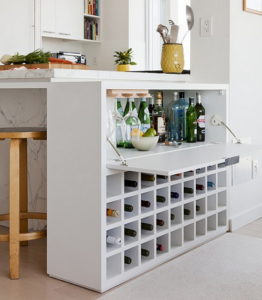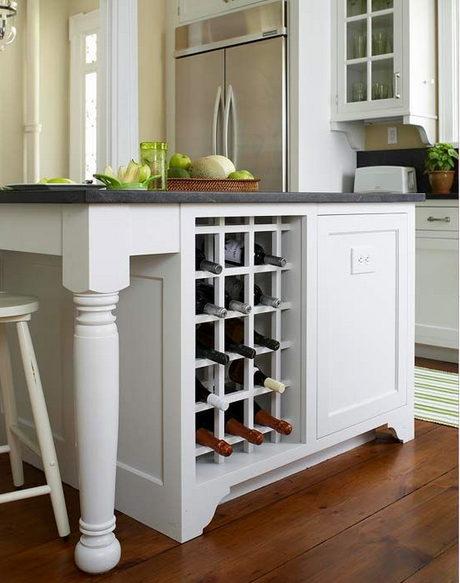Wine storage requires meticulous attention to temperature, humidity, light, and bottle positioning to preserve the quality of your collection. Wine enthusiasts understand the importance of proper storage to preserve the flavour, aroma, and quality of their favourite bottles. Whether you’re a casual wine lover or a serious collector, implementing the right storage techniques is crucial for maintaining the integrity of your wine collection. In this comprehensive guide, we’ll delve into essential wine storage tips to help you create the perfect environment for your cherished bottles.

Temperature Control
Maintaining a consistent temperature is paramount for preserving wine quality. Aim for a temperature between 45°F and 65°F (7°C and 18°C) to prevent premature ageing and flavour deterioration. Avoid drastic temperature fluctuations, as they can damage the wine and cause cork expansion.
Humidity Levels
Ideal humidity levels range between 50% and 70% to keep corks moist and prevent them from drying out. Dry corks can lead to air seepage and wine oxidation. Invest in a hygrometer to monitor humidity levels and use a humidifier or dehumidifier as needed to maintain optimal conditions.
Avoiding Light Exposure
UV light can degrade wine quality by causing chemical reactions that alter flavour compounds. Store your wine in a dark environment or use UV-filtered glass doors or curtains to shield bottles from light exposure. Additionally, avoid fluorescent lighting in wine storage areas, as it emits harmful UV rays.
Proper Bottle Positioning
Store wine bottles horizontally to keep the cork moist and prevent it from drying out. A dry cork can allow air to enter the bottle, leading to oxidation and spoilage. Horizontal storage also minimizes sediment disturbance in aged wines and ensures even contact with the cork.
Limited Vibrations
Excessive vibrations can disturb the sediment in wine bottles and affect flavour development. Choose a stable storage location away from appliances, HVAC systems, or heavy foot traffic. Consider vibration-dampening racks or shelving to minimize disturbances.
Ventilation and Air Circulation
Good air circulation is essential for preventing musty odours and mould growth in wine storage areas. Ensure adequate ventilation by installing vents or using fans to maintain airflow. Avoid storing wine in tightly sealed cabinets or closets without proper ventilation.
Consistent Storage Environment
Maintain a consistent storage environment by avoiding areas prone to temperature fluctuations, such as kitchens or garages. Choose a dedicated wine storage space with insulation and climate control features to regulate temperature and humidity levels year-round.
Appropriate Shelving and Racking
Invest in quality wine racks or shelving systems designed to support the weight of wine bottles without sagging or tipping. Opt for materials like wood or metal that offer durability and stability. Consider modular racks for flexibility in expanding your storage capacity as your collection grows.
Labelling and Organization
Keep track of your wine inventory by labelling bottles with essential information such as vintage, varietal, and purchase date. Organize your collection by varietal, region, or ageing potential to make it easier to locate specific bottles when needed.
Regular Monitoring and Maintenance
Regularly inspect your wine storage area for signs of mould, cork damage, or temperature/humidity fluctuations. Conduct routine maintenance tasks such as dusting shelves, checking for leaks, and replacing ageing components like seals or insulation.
Temperature Zoning
Consider dividing your wine storage area into different temperature zones to accommodate various wine types. For example, store red wines at slightly higher temperatures than whites to optimize their ageing process. Invest in temperature-controlled wine cabinets or install separate cooling units for each zone.
Managing Humidity
Use moisture-absorbing materials like silica gel packs or wine cellar humidifiers to regulate humidity levels in your storage space. Periodically check and replenish these materials to ensure consistent moisture levels, especially in dry climates or during winter months.
Odor Control
Prevent unwanted odours from infiltrating your wine storage area by avoiding strong-smelling substances nearby, such as paint, cleaning agents, or cooking aromas. Consider installing activated carbon air filters or odour-neutralising products to maintain a fresh and odour-free environment.
Insulating Windows and Doors
If your wine storage area has windows or doors, ensure they are properly insulated to minimize heat transfer and UV exposure. Install double-pane glass or apply UV-resistant films to windows and seal gaps around doors to maintain temperature stability and protect your wine collection.
Backup Power Source
Invest in a backup power generator or battery backup system to safeguard your wine collection during power outages. Loss of electricity can disrupt temperature control and compromise the integrity of your wines, so having a reliable backup power source is crucial for uninterrupted storage conditions.
Conclusion
By implementing these wine storage tips, you can ensure that your prized bottles remain in optimal condition for years to come. Whether you’re building a modest collection or a cellar-worthy assortment, proper storage techniques are essential for preserving the integrity and flavour of your favourite wines.

